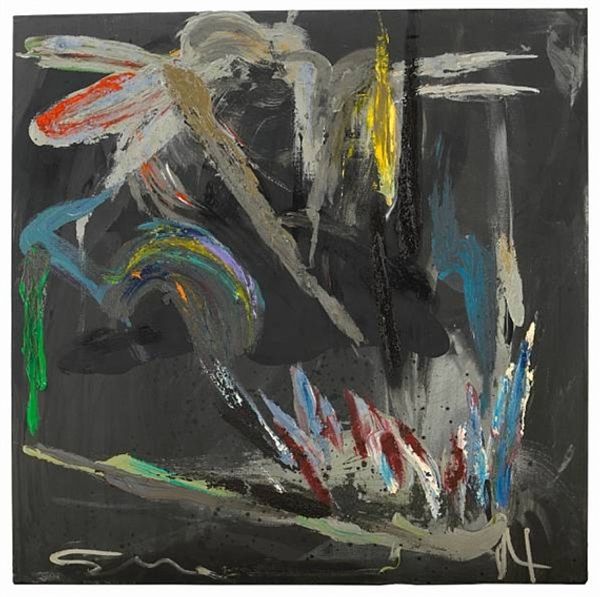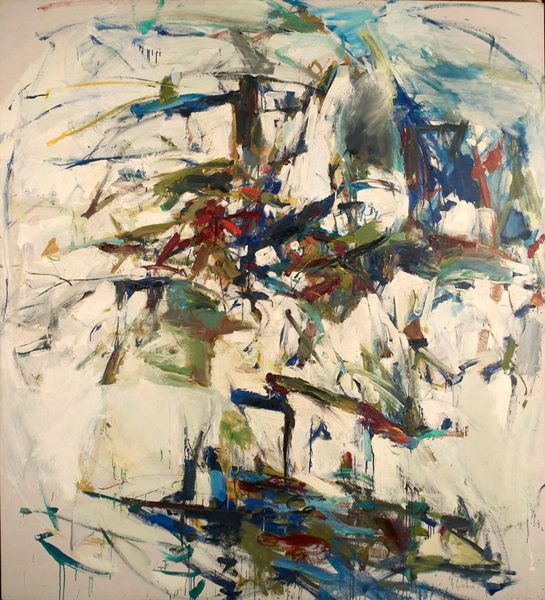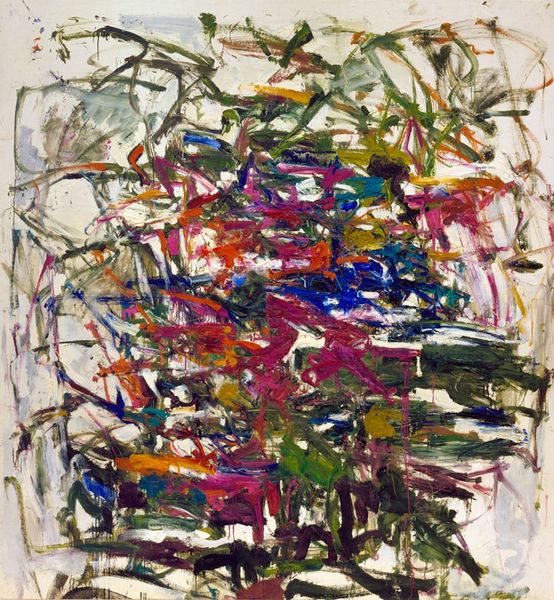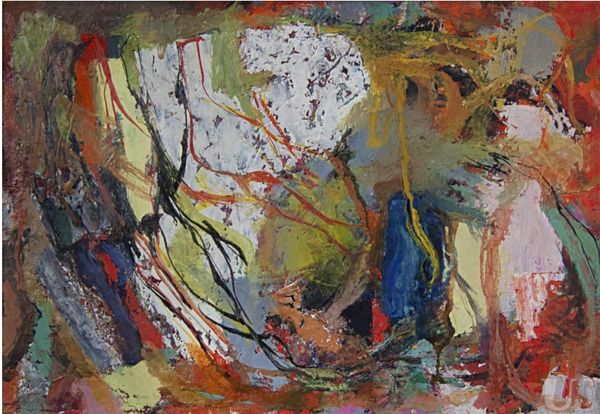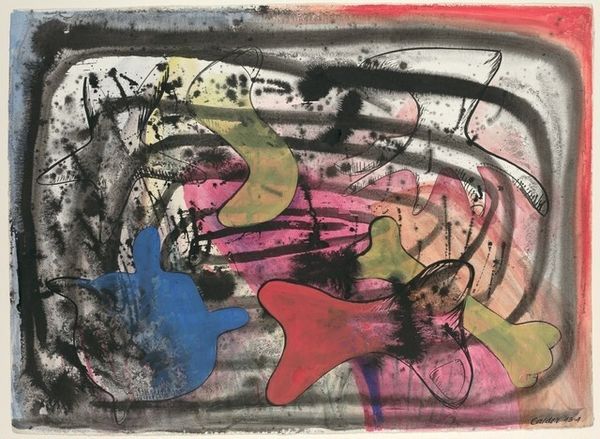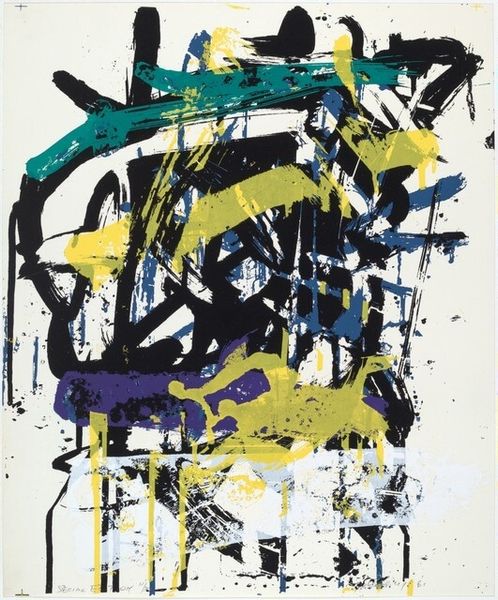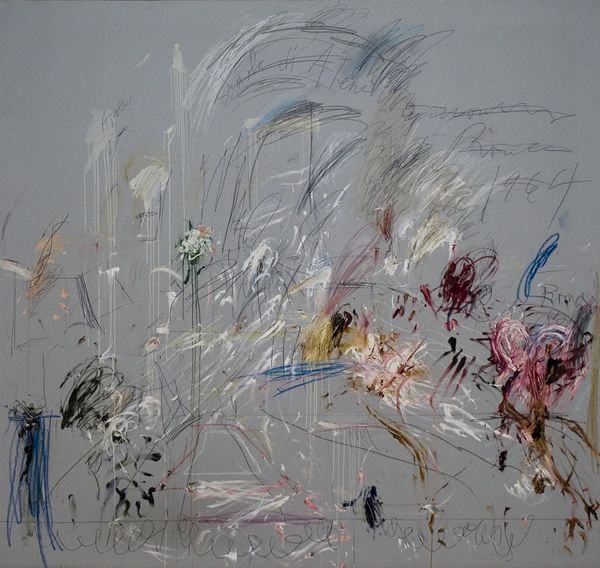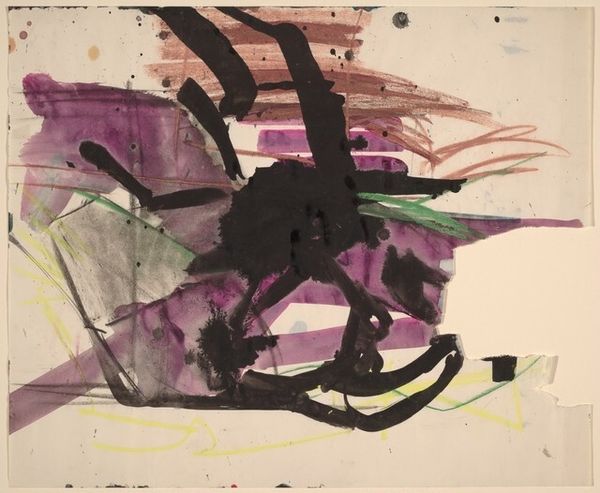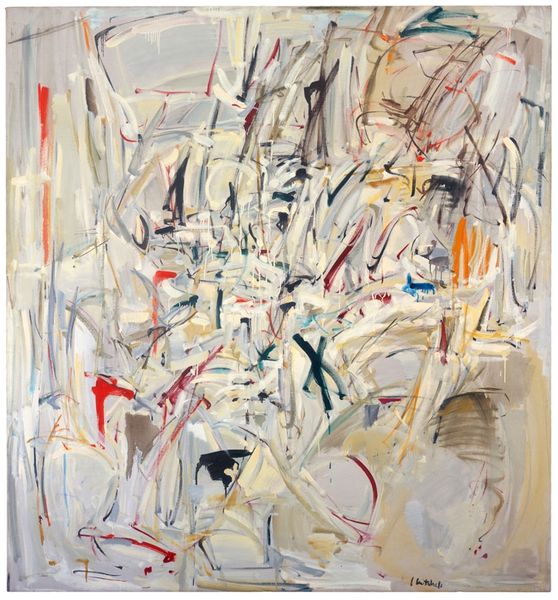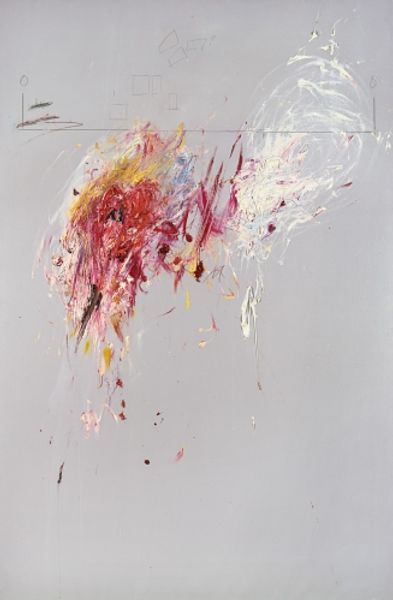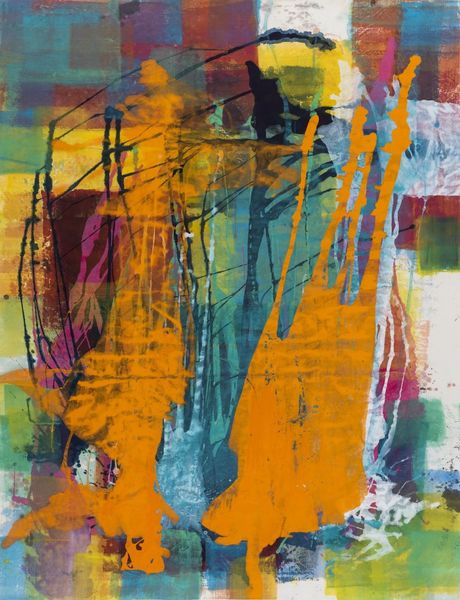
Copyright: Stephen Mueller,Fair Use
Curator: This is Stephen Mueller’s 1984 acrylic on canvas, “I Saw That (#281).” Editor: Immediately, I’m struck by how tumultuous it feels. The dark ground swallows everything around it. Curator: Precisely. Notice how Mueller employs a seemingly limited palette—heavy blacks juxtaposed with bursts of chromatic energy, each layer impacting the tonality and overall depth of the composition. Editor: I find the chaos compelling. Do you think we can see in it the influences of Postmodernism, a movement against the structuralism and formal idealism of its predecessor, Modernism? Curator: Undeniably. There's a clear break away from the clean lines, pure abstraction, and the utopian ideals associated with much of early-to-mid 20th century abstraction. But here, we have gestures hinting toward expression, a layered canvas revealing Mueller’s interest in luminosity. He’s working in the tradition of Abstract Expressionism, yet diverging with a fresh perspective. Editor: Perhaps “fresh” isn’t the first word that comes to mind; I find the overall effect angsty. We must remember that “I Saw That” was created in 1984, during the height of the AIDS crisis—a period of heightened anxiety. Abstraction always reflects the specific mood of the moment. Could we look at the color story in this work as suggestive of the collective emotions surrounding health and wellbeing at that time? Curator: Your reading introduces a potential contextual frame. Yet, considering Mueller's broader body of work, I'm drawn to the internal syntax he crafts—the interplay between geometric suggestion and expressive mark-making that defines his specific contribution to the Postmodern moment. The painting’s strength resides in the visual relationships he develops between line and mass, shadow and light, the visible and the obscured. Editor: I understand. Even without considering broader socio-historical influences, these dynamic contrasts are at work. It feels almost as if he’s built this emotional landscape right before our eyes, an intimate encounter caught, perhaps, “in the act”. Curator: Indeed, Mueller masterfully utilizes the physical properties of acrylic paint, exploring gesture in all its forms to create a visual language both unique and deeply felt. Editor: Thank you for highlighting Stephen Mueller's approach. This has given me much to reflect on—both through and beyond the canvas.
Comments
No comments
Be the first to comment and join the conversation on the ultimate creative platform.
